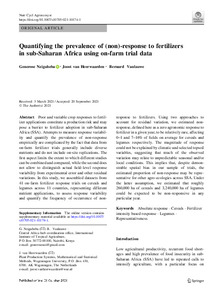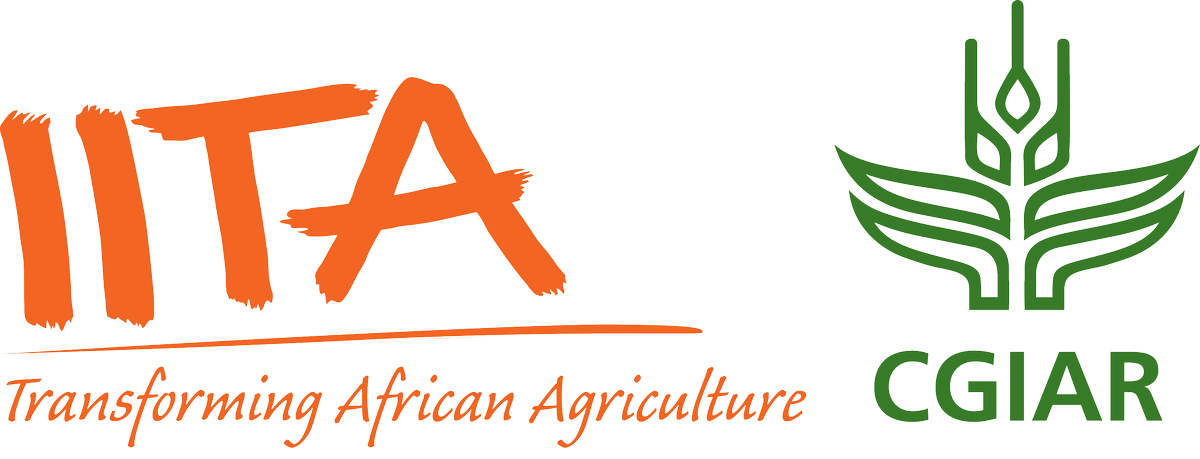Welcome to the International Institute of Tropical Agriculture Research Repository
What would you like to view today?
Quantifying the prevalence of (non)-response to fertilizers in sub-Saharan Africa using on-farm trial data

View/
Date
2021Author
Nziguheba, G.
van Heerwaarden, J.
Vanlauwe, B.
Type
Review Status
Peer ReviewTarget Audience
Scientists
Metadata
Show full item recordAbstract/Description
Poor and variable crop responses to fertilizer applications constitute a production risk and may pose a barrier to fertilizer adoption in sub-Saharan Africa (SSA). Attempts to measure response variability and quantify the prevalence of non-response empirically are complicated by the fact that data from on-farm fertilizer trials generally include diverse nutrients and do not include on-site replications. The first aspect limits the extent to which different studies can be combined and compared, while the second does not allow to distinguish actual field-level response variability from experimental error and other residual variations. In this study, we assembled datasets from 41 on-farm fertilizer response trials on cereals and legumes across 11 countries, representing different nutrient applications, to assess response variability and quantify the frequency of occurrence of non-response to fertilizers. Using two approaches to account for residual variation, we estimated non-response, defined here as a zero agronomic response to fertilizer in a given year, to be relatively rare, affecting 0–1 and 7–16% of fields on average for cereals and legumes respectively. The magnitude of response could not be explained by climatic and selected topsoil variables, suggesting that much of the observed variation may relate to unpredictable seasonal and/or local conditions. This implies that, despite demonstrable spatial bias in our sample of trials, the estimated proportion of non-response may be representative for other agro-ecologies across SSA. Under the latter assumption, we estimated that roughly 260,000 ha of cereals and 3,240,000 ha of legumes could be expected to be non-responsive in any particular year.
Acknowledgements
The authors are grateful to individuals who provided datasets used in the paper: Job Kihara, Cargele Masso, Ibrahim Mohammed, Pieter Pypers, Dries Roobroeck, Shamie Zingore. Although no funding was received to assist in the preparation of this manuscript, datasets used were generated from projects funded by various donors: Bill and Melinda Gates Foundation, Belgium Directorate General for Development Cooperation, National Science Foundation, Alliance for the Green Revolution in Africa, International ...
https://dx.doi.org/10.1007/s10705-021-10174-1
Multi standard citation
Permanent link to this item
https://hdl.handle.net/20.500.12478/7284IITA Authors ORCID
Generose Nziguhebahttps://orcid.org/0000-0003-4227-2242
bernard vanlauwehttps://orcid.org/0000-0001-6016-6027
Digital Object Identifier (DOI)
https://dx.doi.org/10.1007/s10705-021-10174-1
